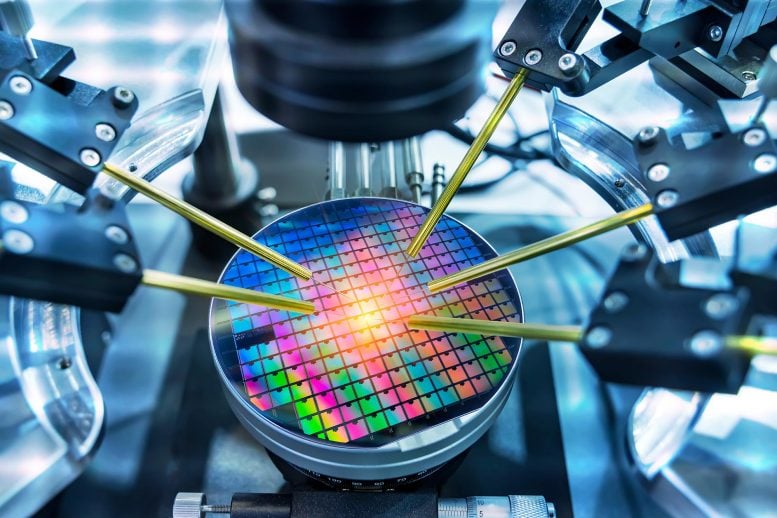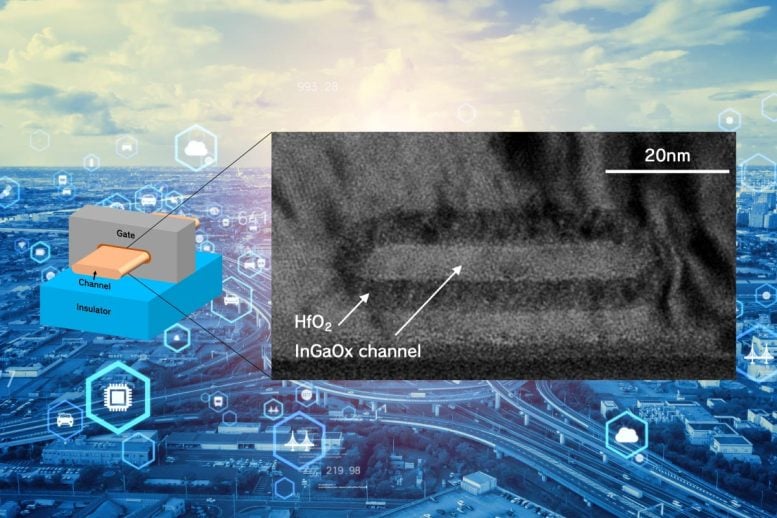
In a potential turning point for microelectronics, scientists in Tokyo have crafted a powerful new transistor that ditches silicon in favor of a crystalline material called gallium-doped indium oxide.
Engineered with a gate-all-around design—where the transistor’s control gate wraps completely around the current channel—this tiny device achieves remarkable electron mobility and long-term stability. The result? A breakthrough transistor that could dramatically boost performance in AI and big-data applications, and keep Moore’s Law alive in a post-silicon world.
Transistor Scaling Crisis
Transistors are often called one of the greatest inventions of the 20th century. They’re essential to modern electronics, acting as tiny switches that control and amplify electrical signals. But as our devices get smaller and faster, traditional silicon-based transistors are struggling to keep up. Are we nearing the limits of how small and powerful our electronics can become?
A team of researchers at the Institute of Industrial Science, The University of Tokyo, believes there’s a better path forward. Instead of relying on silicon, they built a new kind of transistor using a material called gallium-doped indium oxide, or InGaOx. This special material can form a highly ordered crystal structure that helps electrons move more efficiently—something crucial for performance.
“We also wanted our crystalline oxide transistor to feature a ‘gate-all-around’ structure, whereby the gate, which turns the current on or off, surrounds the channel where the current flows,” explains Anlan Chen, lead author of the study. “By wrapping the gate entirely around the channel, we can enhance efficiency and scalability compared with traditional gates.”

Crystalline Oxide Strategy
With these goals in mind, the team got to work. The researchers knew that they would need to introduce impurities to the indium oxide by ‘doping’ it with gallium. This would make the material react with electricity in a more favorable way.
“Indium oxide contains oxygen-vacancy defects, which facilitate carrier scattering and thus lower device stability,” says Masaharu Kobayashi, senior author. “We doped indium oxide with gallium to suppress oxygen vacancies and in turn improve transistor reliability.”
The team used atomic-layer deposition to coat the channel region of a gate-all-around transistor with a thin film of InGaOx, one atomic layer at a time. After deposition, the film was heated to transform it into the crystalline structure needed for electron mobility. This process ultimately enabled the fabrication of a gate-all-around ‘metal oxide-based field-effect transistor’ (MOSFET).
Gate-All-Around Performance Leap
“Our gate-all-around MOSFET, containing a gallium-doped indium oxide layer, achieves high mobility of 44.5 cm2/Vs,” explains Dr Chen. “Crucially, the device demonstrates promising reliability by operating stably under applied stress for nearly three hours. In fact, our MOSFET outperformed similar devices that have previously been reported.”
The efforts shown by the team have provided the field with a new transistor design that considers the importance of both materials and structure. The research is a step towards the development of reliable, high-density electronic components suited for applications with high computational demand, such as big data and <span class="glossaryLink" aria-describedby="tt" data-cmtooltip="
” data-gt-translate-attributes=”[{"attribute":"data-cmtooltip", "format":"html"}]” tabindex=”0″ role=”link”>artificial intelligence. These tiny transistors promise to help next-gen technology run smoothly, making a big difference to our everyday lives.
The article “A Gate-All-Around Nanosheet Oxide Semiconductor Transistor by Selective Crystallization of InGaOx for Performance and Reliability Enhancement” was issued in 2025 Symposium on VLSI Technology and Circuits.
Never miss a breakthrough: Join the SciTechDaily newsletter.
